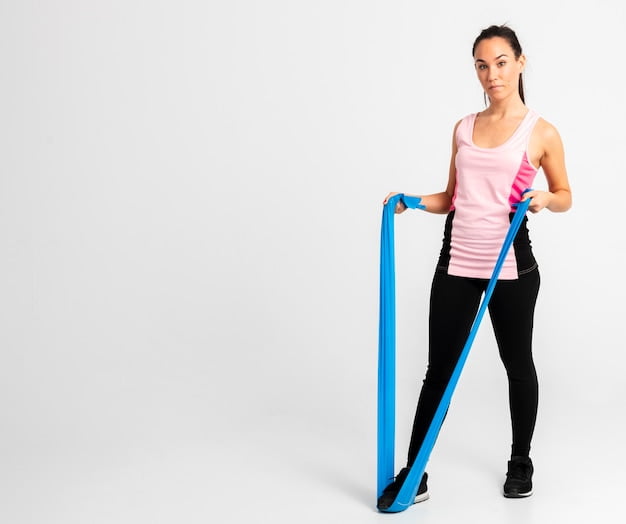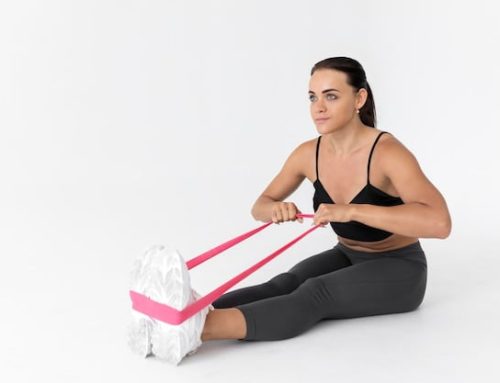Introduction
Resistance band training is becoming more popular with each passing day. These elastic bands are versatile, lightweight, portable, and inexpensive, and can be used to strengthen different muscle groups in various ways. They are suitable for different fitness levels, from beginners to advanced athletes. However, before you start using resistance bands, there are a few things you need to know to ensure that you get the most out of your workout and avoid injury.
Check the Resistance Band
The first thing you should do before using a resistance band is to check its quality. Not all resistance bands are created equal, and some may not be suitable for your level of fitness or the type of exercise you want to do. The resistance level of the band should match your strength and fitness level, so make sure to choose a band that offers the right amount of resistance for your needs. A good rule of thumb is to choose a band that allows you to complete 8-12 repetitions of an exercise with proper form.
Inspect the Band for Damage
Before using a resistance band, you should also inspect it for any signs of damage, such as tears, holes, or stretching. If you notice any damage, discard the band and replace it with a new one. Using a damaged band can cause injury and compromise the effectiveness of your workout. You should also avoid using a band that is too old, as the elasticity may have worn out over time.
Warm-Up Beforehand
Warming up is an essential part of any workout, and resistance band training is no exception. Before using a resistance band, you should warm up your muscles and joints to prepare them for the upcoming activity. A proper warm-up should last at least five minutes and include low-intensity cardiovascular exercises, such as jogging in place, jumping jacks, or cycling on a stationary bike. You can also perform some dynamic stretches to increase your range of motion and flexibility.
Start with Basic Exercises
If you are new to resistance band training, it is essential to start with basic exercises to learn proper form and technique. The basic exercises are easy to perform and focus on major muscle groups, such as the chest, back, shoulders, legs, and core. Some of the basic exercises you can do with resistance bands include bicep curls, tricep extensions, squats, lunges, push-ups, rows, and planks. You can gradually increase the resistance and difficulty of each exercise as you progress.
Use Proper Form and Technique
When using resistance bands, it is crucial to use proper form and technique to avoid injury and get the most out of your workout. You should maintain the proper posture, engage your core muscles, and breathe evenly. You should also avoid jerky movements, swinging the band, or using momentum to complete the exercise. Instead, focus on slow and controlled movements, squeezing the targeted muscles, and maintaining tension throughout the entire range of motion.
Gradually Increase the Resistance
As you become stronger and more confident with resistance band training, you can gradually increase the resistance of the band to challenge your muscles and promote further gains. However, it is essential to increase the resistance gradually to avoid overstraining your muscles and joints. You can increase the resistance by using a thicker band or by shortening the length of the band. Remember to maintain proper form and technique as you increase the resistance.
Cool Down and Stretch Afterwards
After completing your resistance band workout, it is crucial to cool down and stretch to avoid injury and promote recovery. A proper cool-down should last at least five minutes and include low-intensity cardiovascular exercises, such as walking or slow cycling. You can also perform some static stretches to lengthen your muscles and improve your flexibility. Some of the stretches you can do after a resistance band workout include hamstring stretches, calf stretches, quad stretches, and hip stretches.
Conclusion
Resistance band training is an effective and convenient way to improve your strength, flexibility, and overall fitness. However, before using a resistance band, you should check its quality, inspect it for damage, warm up beforehand, start with basic exercises, use proper form and technique, gradually increase the resistance, and cool down and stretch afterwards. By following these tips, you can maximize the benefits of your resistance band workout and enjoy a safe and effective training experience.






